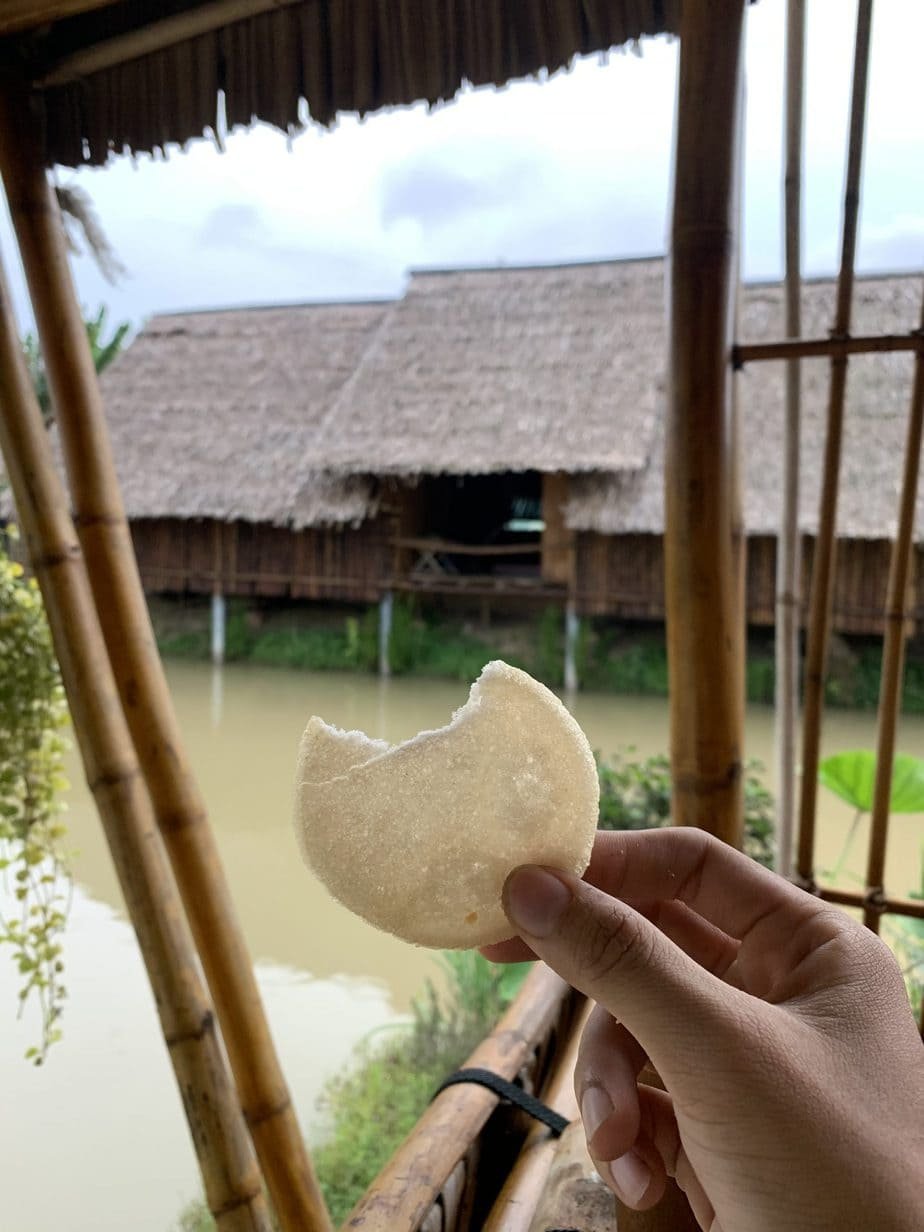When imagining about Mekong Delta, people often associate it with familiar places such as Can Tho, Vinh Long, Tra Vinh and Phu Quoc. Surely visiting Khmer pagodas in Tra Vinh or taking cheap ferry to An Binh island in Vinh Long bring lots of fun, but in this post we would love to explore Dong Thap, an often-neglected destination in Mekong Delta.
Explore Dong Thap in mere 3 days?
We have recently had an opportunity to pay a quick 3-day visit to the place and undoubtedly the charming Dong Thap provides so many activities to explore at your own pace. If you are in a rush and want to make the most out of your time, then we suggest you consider our itinerary below:
- Day 1: Saigon (also known as Ho Chi Minh City) – Sa Dec
- Day 2: Sa Dec – Tam Nong (for Tram Chim National Park)
- Day 3: Tam Nong – Cao Lanh – Saigon
This travel plan will bring you to 3 iconic stops in Dong Thap: Sa Dec (colorful flower village rich in history and backpacking experiences), Tam Nong (beautiful natural landscape for bird-watching lovers), and Cao Lanh (the provincial capital of Dong Thap).
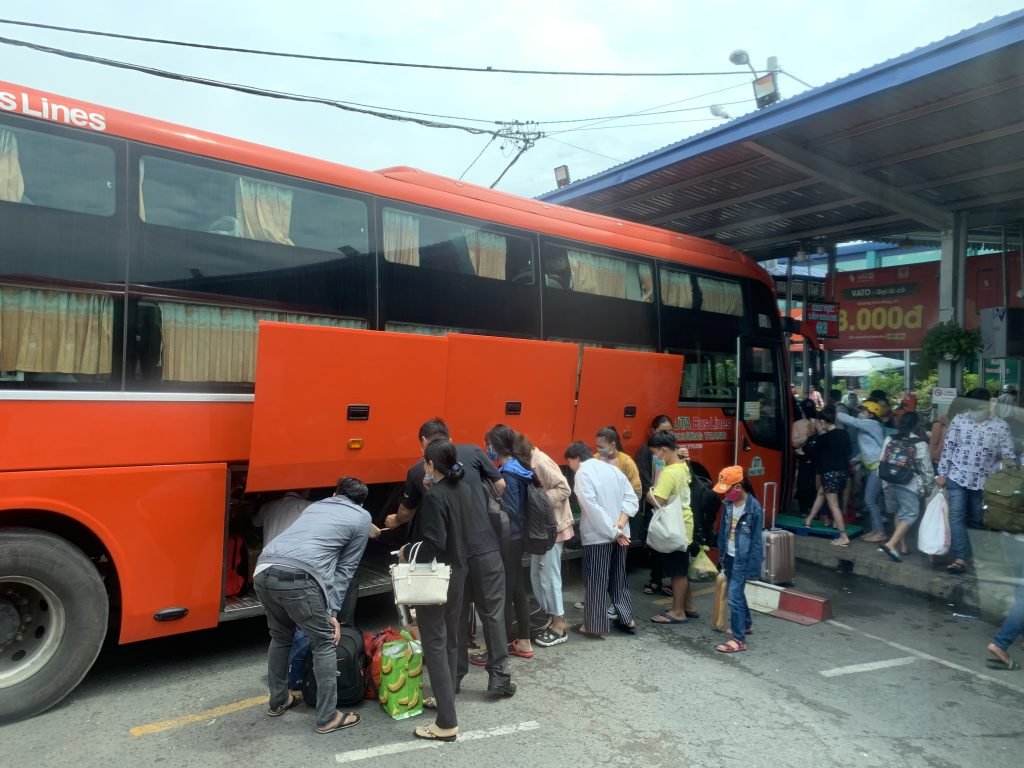
Sa Dec: The flower capital of Mekong Delta
If you happen to be an avid reader, Sa Dec gets popular by a semi-autobiographical of the novelist Marguerite Duras, L’amant (The Lover), which later has been turned into an erotic drama film in 1992.
This town is most famous for its flower village, also known as Tan Quy Dong Flower Village, which supplies over 2 million flowery and plant products during the Tet (Vietnamese New Year) alone. However, we find that Sa Dec is fascinating beyond the flowers. This place features different absorbing architectures and eateries in the most authentic way.
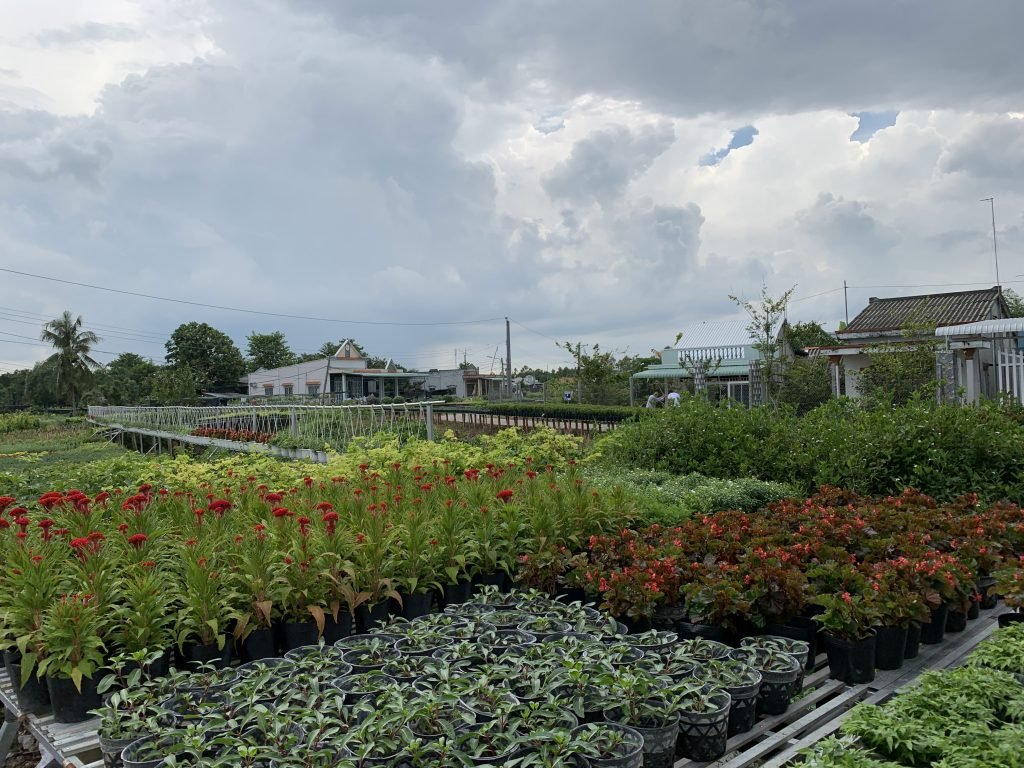
What to do in Sa Dec:
- Immerse yourself in a historic house of Huynh Thuy Le: This old house, constructed and owned by Huynh Cam Thuan – father of Huynh Thuy Le, the Chinese Vietnamese lover of Marguerite Duras in the novel L’amant, connects Western architecture with traditional housing style of the Mekong Delta people.
- Backpack around the town center: Compared to the hectic buzzes of big cities like Saigon or Hanoi, the flow of life in Sa Dec is really tranquil and laid-back. You will easily run into random ancient houses and the simple life of people there.
- Visit Tan Quy Dong Flower Village: It is best to visit this village a month before Tet and find yourself surrounded by all sorts of colorful plants. Most of them will be packed in many trucks and fishing boats to deliver across Vietnam. Witnessing how the flowers get loaded to the boats is such a blessing.
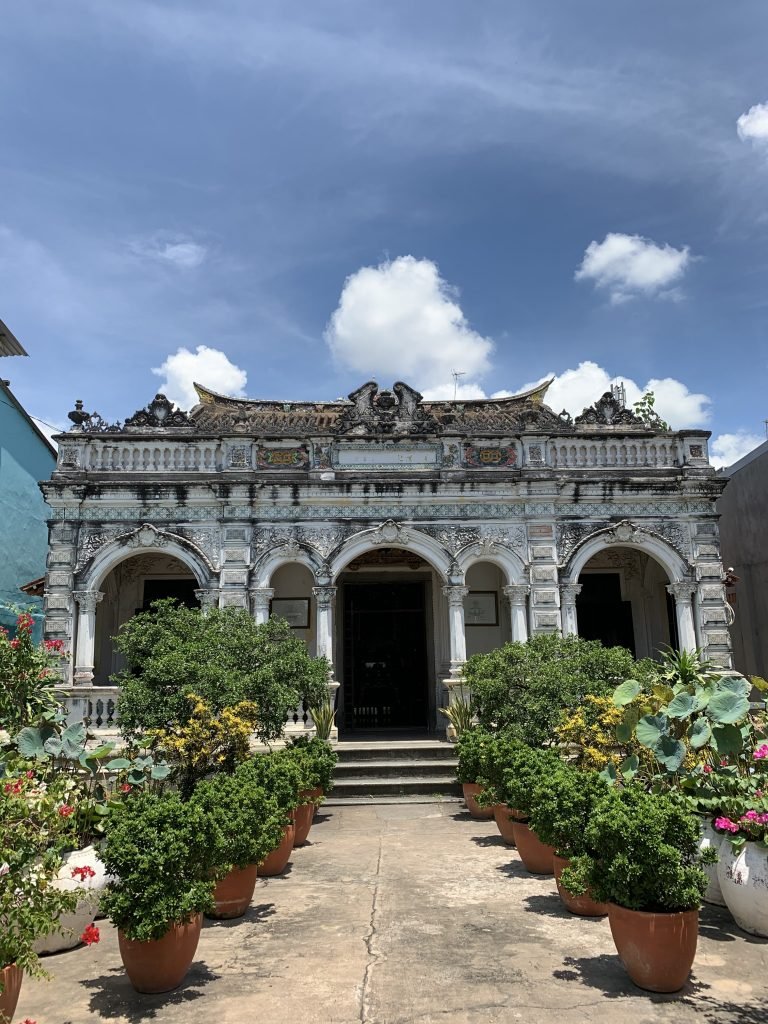
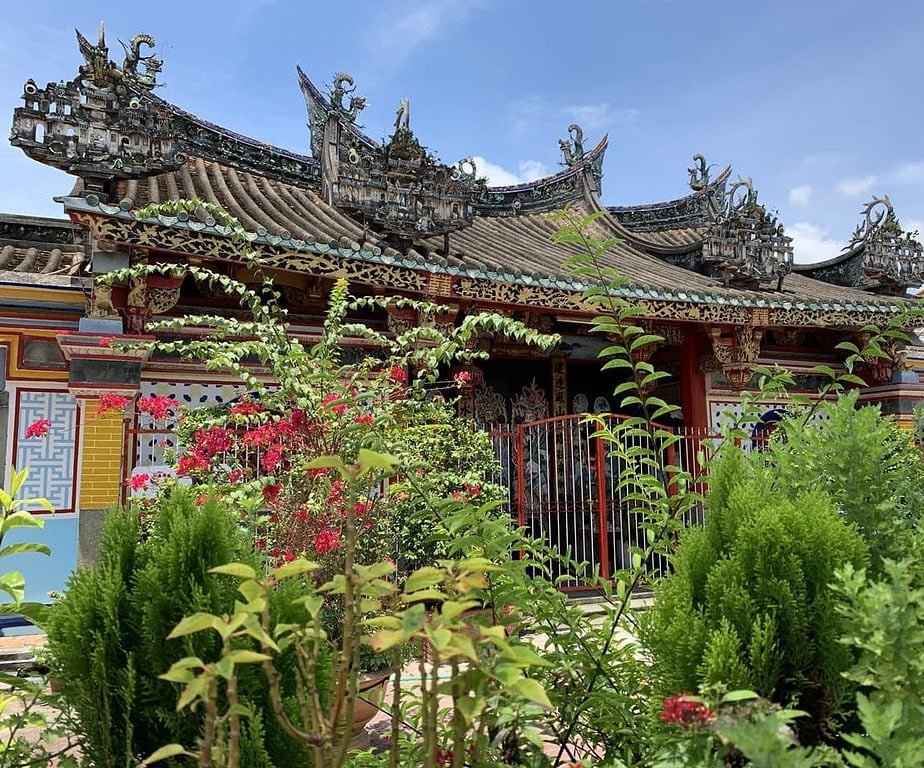
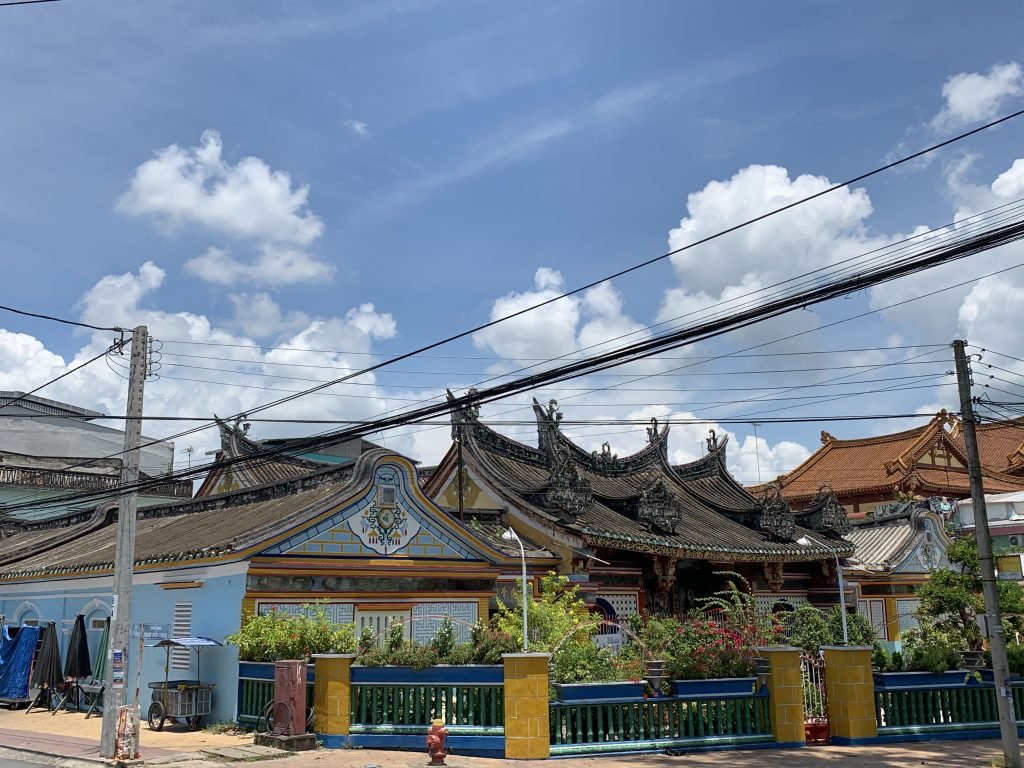
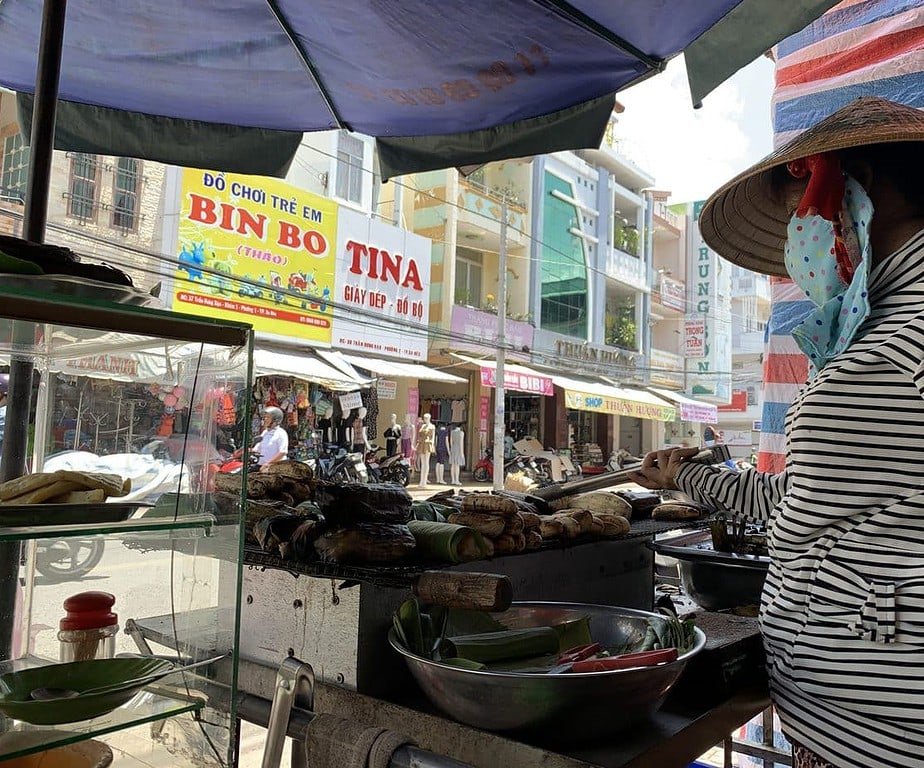
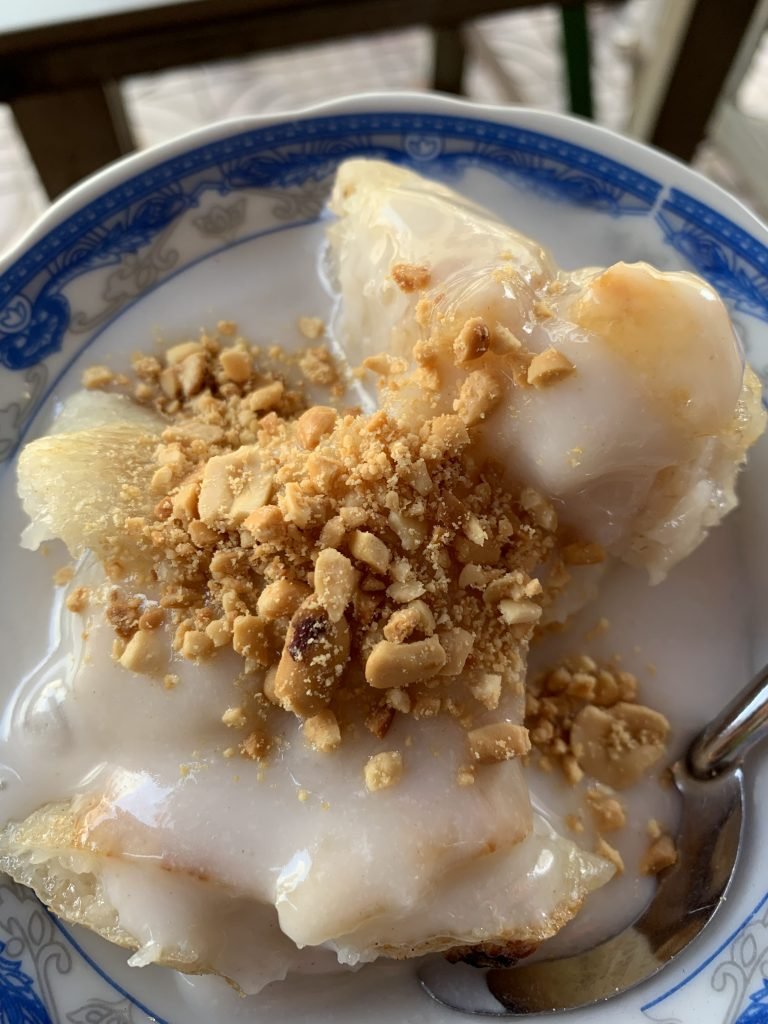
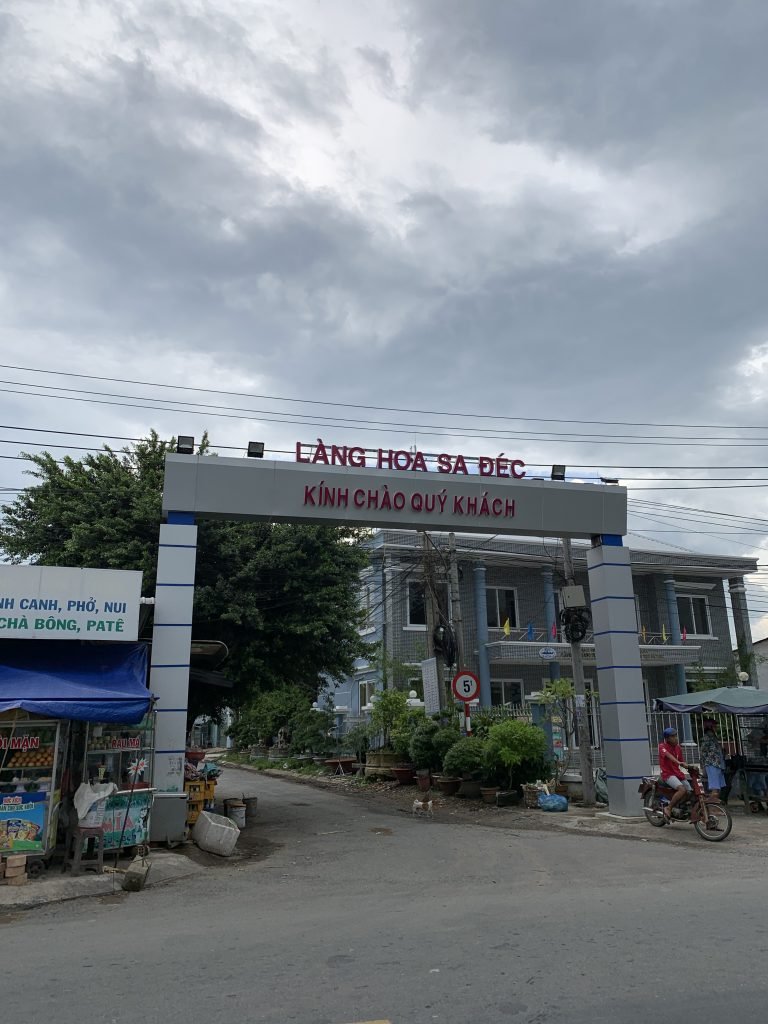
Where to stay in Sa Dec:
It is such a breeze to find a lodging in Sa Dec. You may book your accommodation in advance on online platforms such as Booking.com, or come straight to the provider(s).
However, as your initial purpose is to escaping the hustle and bustle of Saigon, we intentionally search for a soothing hideaway overlooking some water lily ponds. And voilà, we managed to find an ideal homestay named Maison en Bambou Phong – Le Vent. As the name suggested, this homestay has been constructed mostly from bamboo which gives an absolute Mekong Delta experience. Located next to the Tan Quy Dong flower village, the homestay allows you to take a leisure stroll along the coffee-colored canal while appreciating flowers blooming altogether.
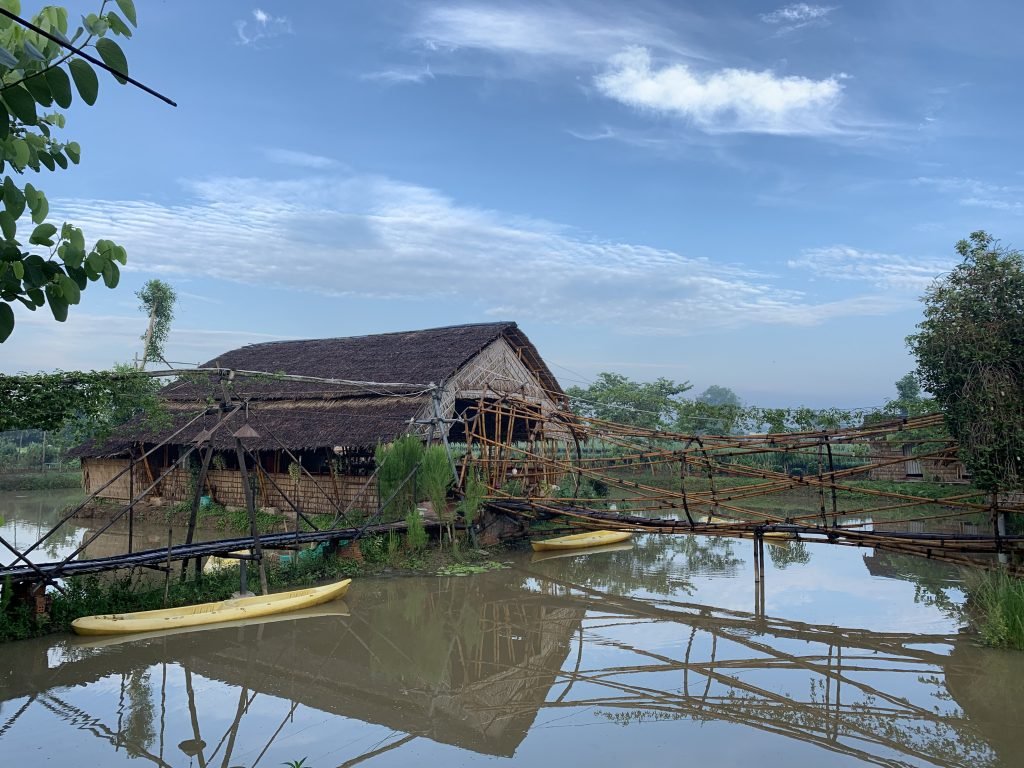
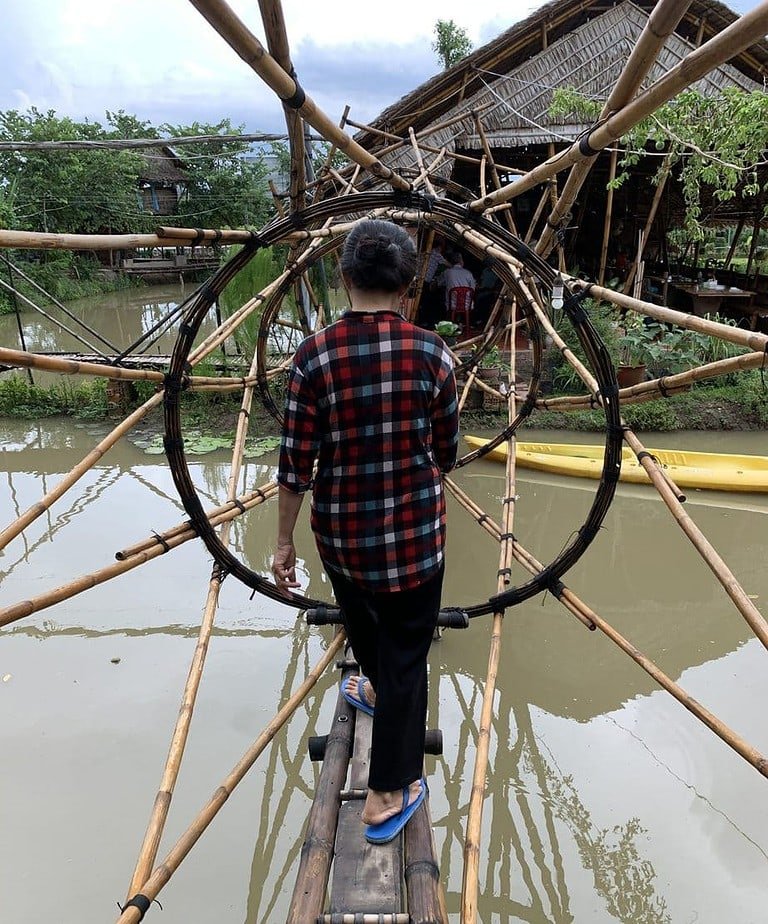
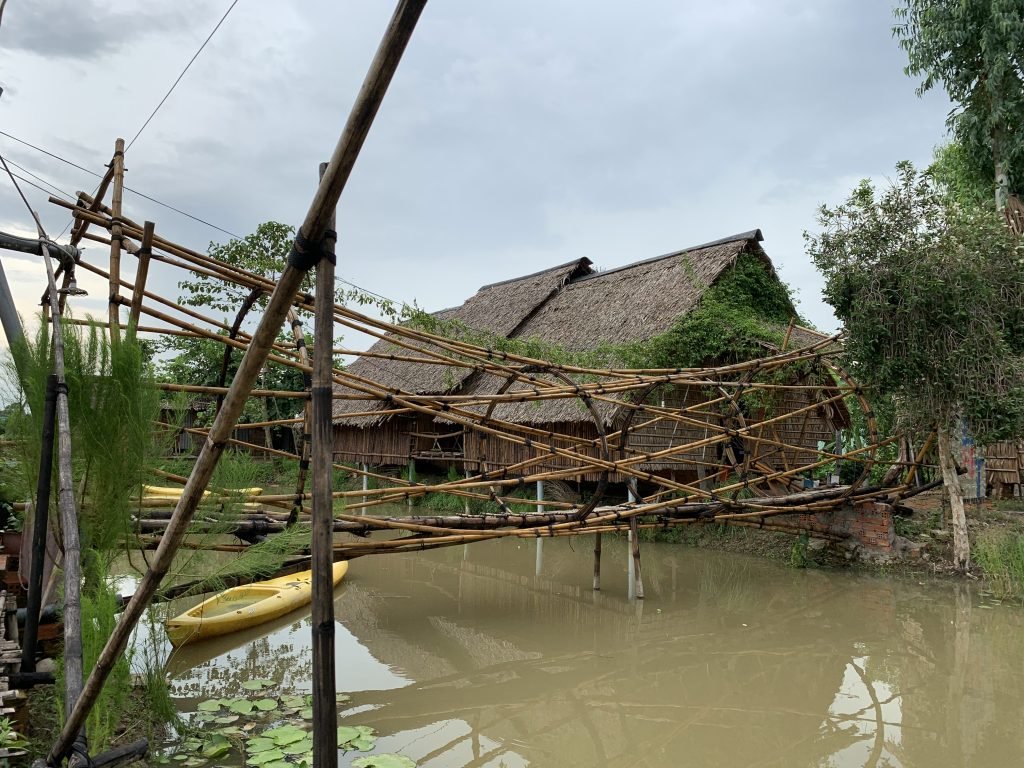
This accommodation, operated by an adorable couple of Mr. Phong and Mrs.Nguyet (meaning Wind and Moon), is a hidden gem for those who actively searches for a simple life. Not only does Mr. Phong teach French mathematics for a local school, he happens to be an expert in bamboo crafting and sets this bamboo-made homestay up on his own. An impressive (art)work!
What to eat in Sa Dec:
- Banh phong tom Sa Giang (Sa Giang’s shrimp chip): People love to use it to accompany other savory dishes or simply eat it as snack. To prepare these simple chips, you simply soak the pre-packaged chips in cooking oil at the temperature between 170 and 190°C, and take them out quickly when the chips just turn light yellow and swell.
- Bánh tằm bì (Silkworm cake with pork skin/Silkworm-like noodle): Often used with coconut milk and fish sauce, one may quickly conclude that this dish is such a totally bizarre combination of sweetness and salty. To be honest, we have our difficult moment trying the silkworm cake the first time. However, the sooner you get used to the taste, the better it gets overtime.
- Hu tiu Sa Dec (Sa Dec Noodle): This is unarguably the most popular delicacy in the region. The noodle in Sa Dec has been prepared differently from other available noodle in the country. Some also believe that the noodle, originally made from the local “flour” village of Tan Phu Dong is superior to its counterparts.
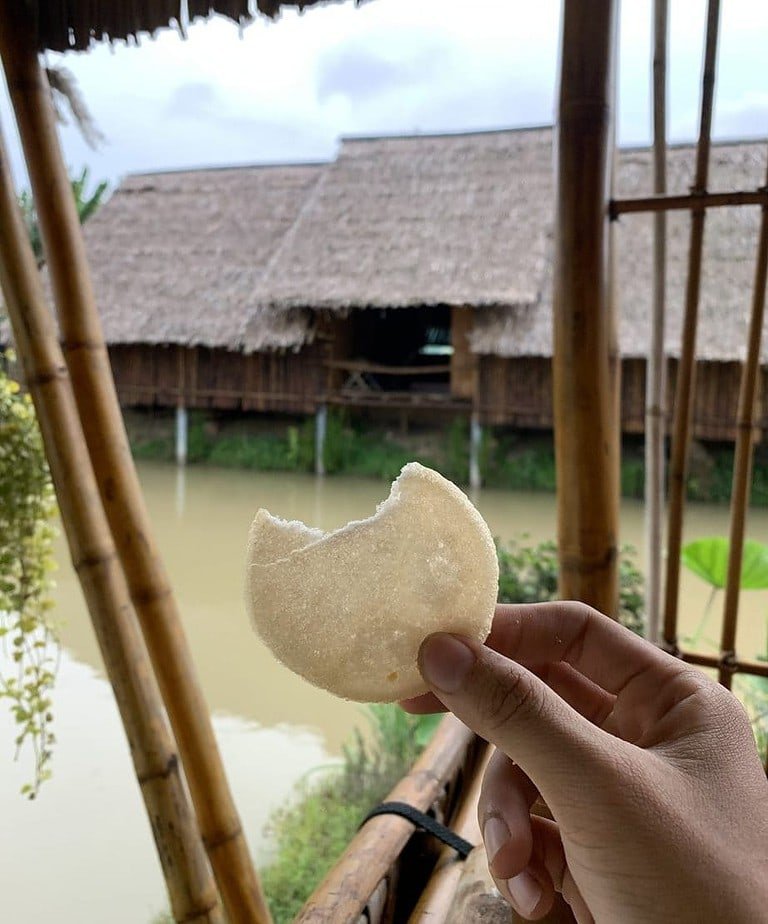
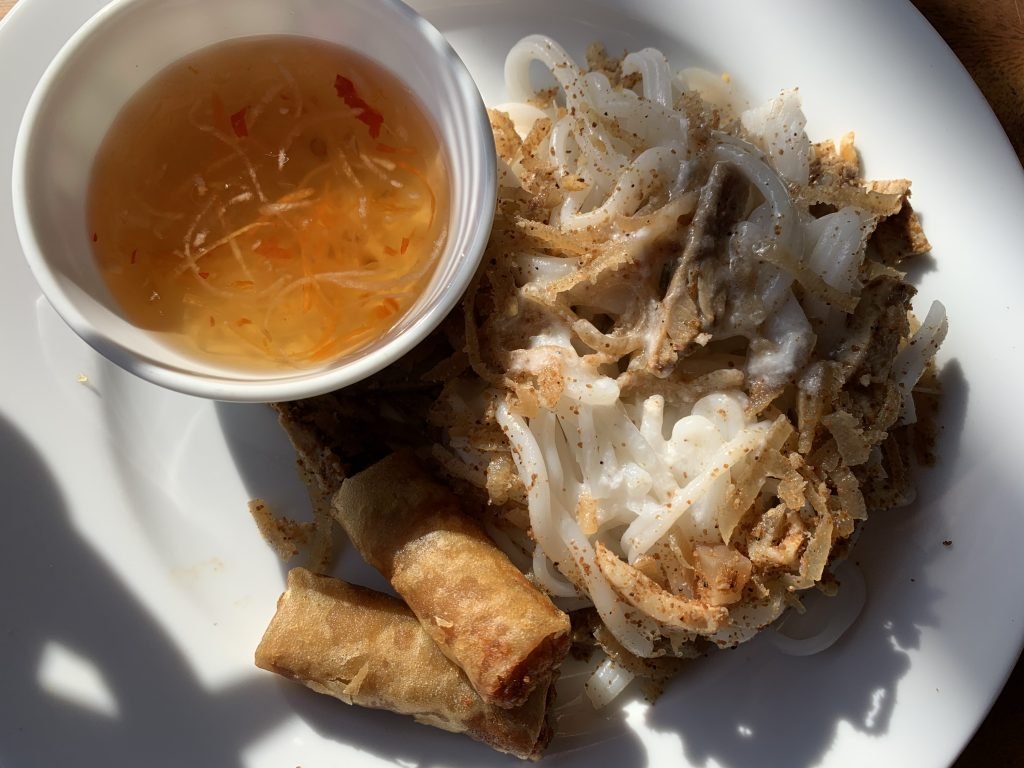
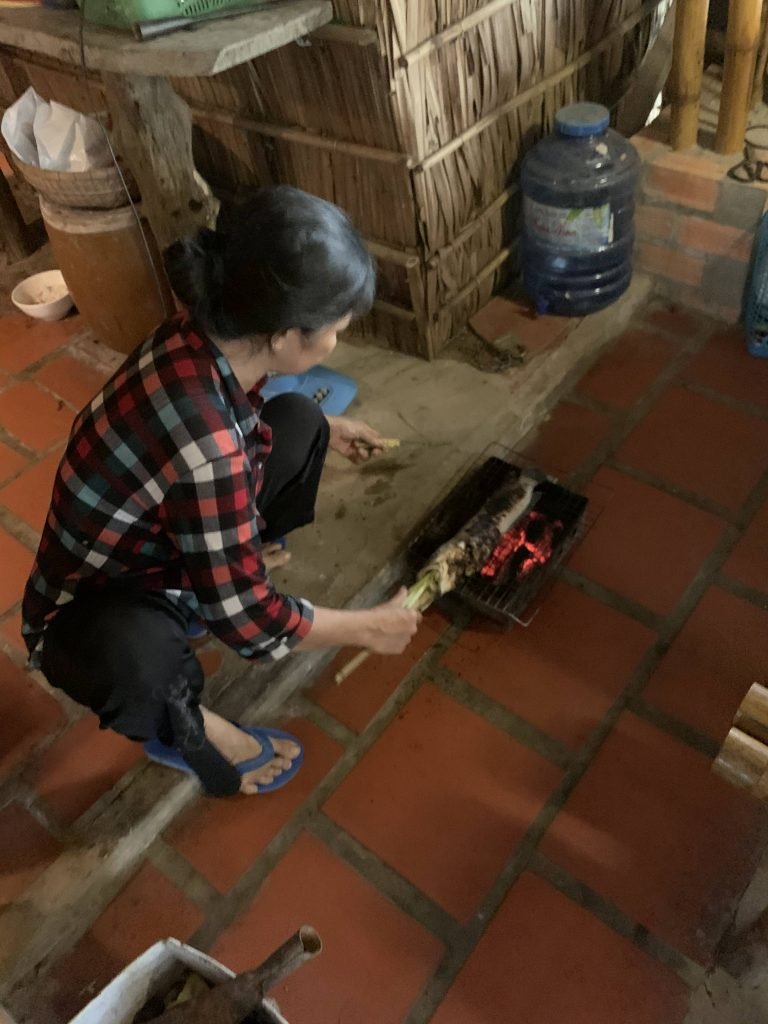
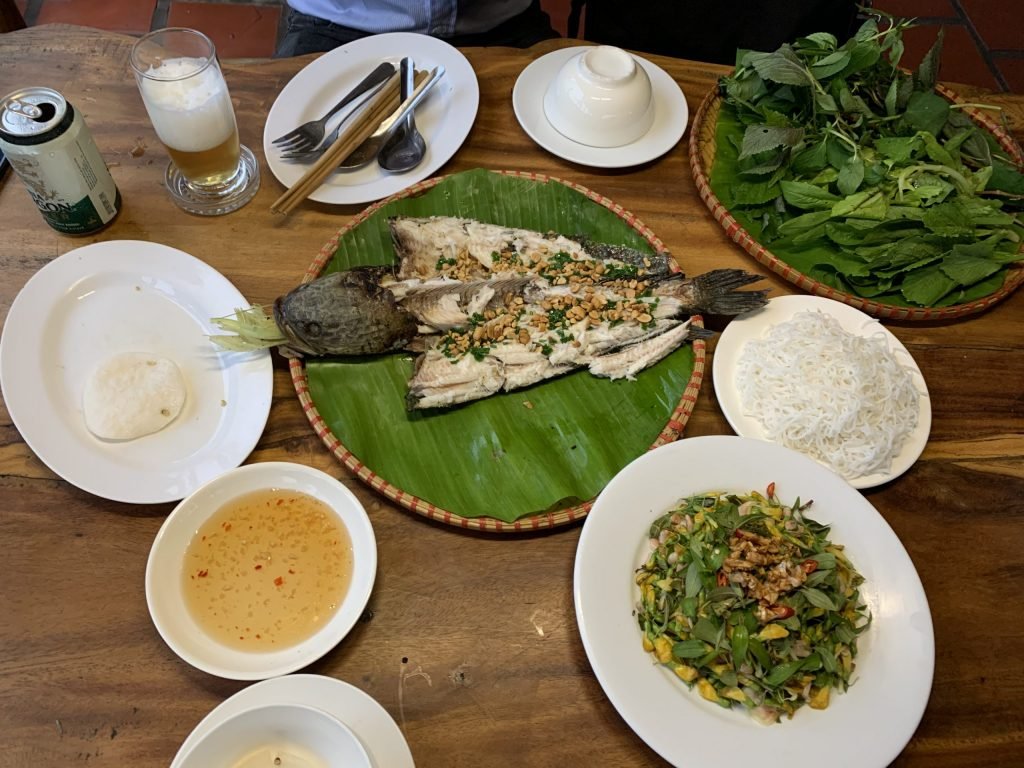
In addition, some people may mistake Hu Tiu Sa Dec with Hu Tiu Nam Vang (the Southern-styled/Cambodian noodle) and think they are the same. However, there are distinctions between the two:
- Hu Tiu Sa Dec: Originated from China and adapted to the liking of people in Dong Thap, the noodles are big and opaque thanks to the glutinous and aromatic rice flour. The soup is stewed with pork bone, meat and vegetables … at low heat for more than 8 hours. The most important part is the soy sauce formula, being passed down from many generations. Local people also call this type of soy sauce ‘the pagoda soy sauce’ as it ties closely with the history of Phuoc Hue Pagoda, a popular pagoda in Sa Dec with over 100 years of practicing this soy sauce making.
- Hu Tiu Nam Vang (or Nam Giang – how Vietnamese people regard Cambodia in the past): Clearly originated from Cambodia and further elevated by the creativity of Mekong Delta people, the noodles are small, soft and dried. Should you overcook them, the noodles will be crushed. The broth is also stewed with pork bone from 3 to 6 hours. Apart from basic ingredients (such as pork meat, heart, organ and shrimp), quail egg, minced meat and celery are three fundamental pieces of the dish. As for the soy sauce, you may use any available kind on the market.
While Hu Tiu Sa Dec (with simple presentation) emphasizes on the depth of taste, Hu Tiu Nam Vang (with a more sophisticated look) focuses on the width of taste with different add-on ingredients like chili, picked garlic, celery … Personally, we love both noodle dishes. You better try it out and let us know your opinion.
Tram Chim, Tam Nong: Where the bird thrives in Vietnam
“Chim” means bird and “Tram” means acacia; in a nutshell, “Tram Chim” is about an acacia forest that birds gather. Covering an area of 7.200 ha, the national park established in 1999 is to preserve the typical submerged in-land ecosystem with purpose.
We believe that the majority of visitors coming to the town of Tam Nong is for Tram Chim Bird Sanctuary. Similar to most nature seekers, we intentionally visit this national park in hopes of viewing some rare bird species, especially the Burmese Sarus Cranes and Darters, in their ideal habitat.
Beside the birds, this small area does not contain many activities for you to kill the time, but we do recommend a small coffee shop, located next to the Tam Nong bridge (near the town center), for Chinese chess lovers. We have fun chatting with local people there while honing the chess skill.
What to do in Tram Chim:
As mentioned above, the only activity worth pursuing here is bird watching! Though the sanctuary has a lot of future, we feel that it currently does not live up to its potential. For instance, the operator should choose quiet electric boats instead of noisy motorboats to reduce interference to the birds.
This is a very important tip to save you a trip to Tram Chim: “Try your best to catch the first boat at 7am!” From the second boat trip onward, you will barely see any bird at all as they are scared away by the previous encounter.
It is sad but true to say “The early bird catches the worm”. Since you are at the bird sanctuary, why not playing an early bird for a day?
Where to stay in Tram Chim:
At first, we would love to stay at the homestay inside the park to fully immerse ourselves in the nature; however, due to Covid-19, the accommodation service has ceased to exist and we have to walk back to the town center to find a hostel.
Since we have been caught off hands, we spent the night at Anh Kiet Hostel next to the Tam Nong Bridge. This hostel has been praised as one of the best budget hostels in the town and we find the facilities live up to the reviews. Nothing fancy though!
What to eat in Tram Chim:
As visitors often regard Tram Chim as a short stopover for their Mekong Delta’s journey, the culinary scene here is not as established as that in other towns of Dong Thap. We have tried some eating places from local recommendations but decided that they are not up to par to introduce here.
However, we have met two amiable ladies, who sell local delicacies on the street. You may try to find them on the way leading to the bird park.
(tell the stories with photos)
Cao Lanh: Locals will suggest you to eat mice. Yes, mice.
We apologize if our heading has worried you somehow, but mice, especially the field mice, are always top of mind when it comes to Cao Lanh. Being the capital of Dong Thap, Cao Lanh is by far the most developed town, featuring well-known food chains and cinemas.
Therefore, we decided not to spend a lot of time here, since we are more nature-advocates.
What to do in Cao Lanh:
- Van Thanh Mieu: Constructed in 1857, this place promotes learning and preserve Confucian.
- Nguyen Sinh Sac relic: This resting place is dedicated to Nguyen Sinh Sac, the father of Nguyen Sinh Cung (better known as Ho Chi Minh, often regarded as the founding father of Vietnam).
- Cao Lanh was actually named after a local hero Do Cong Tuong (often called as ‘Lanh’). In early 19th century, Do Cong Tuong and his wife have greatly contributed to creating the Cao Lanh market and helping local people during the cholera pandemic in year 1820.
Where to stay in Cao Lanh:
- We did not stay overnight in Cao Lanh, so we do not have any recommendation at the moment. You may effortlessly find one from Booking.com.
What to eat in Cao Lanh:
- Chuot Dong Quay Lu (Field Mice Roasted In A Jar): We only try this dish once to explore, so should you be not fine with it, please skip. We would like to put it this way: If Pho is the national dish of Vietnam, field mice is that of Dong Thap, and Cao Lanh has made it famous. The field mice, usually “harvested” at the end of the crops, will get cleaned and hanged inside a charcoal-burning jar until their skins get crispy to consume.
- Banh Xeo Cao Lanh (Cao Lanh Pancake): Vietnamese pancakes are really popular in Mekong Delta and it seems that each town has a slightly different way to make pancakes. Cao Lanh pancake is meticulously prepared from the best rice flour, topped with shredded tapioca, bean sprout, minced pork, and small shrimp. The super-thin pancakes will be eaten with many different local herbs and a special fish sauce with shredded carrot, chili, radish and lime. Yummy!
How To Get There and Away
- Saigon – Sa Dec: For us, the best way is to get a $5 Phuong Trang bus ticket from Ho Chi Minh City to Sa Dec at Ben Xe Mien Tay (Mien Tay Bus Station). The bus departs quite regularly every 30 minutes. At Sa Dec bus station, you can ask drivers of Phuong Trang to transfer you to your hotel or any central destinations. Since Sa Dec is a small town, we suggest you to cycle or walk around.
- Sa Dec – Tram Chim (Tam Nong): There are different options, but a budget way is to take Bus 663 to Cao Lanh (costing 18,000 vnd) via Route 848 before taking Bus 668 from Cao Lanh to Tam Nong (costing 20,000 vnd). You may take those buses in the respective local bus stations or in front of the respective local market. Since they are local buses, you should repeat your destinations to the bus drivers. It helps (tremendously)!
- Tam Nong – Cao Lanh: You simply take the bus back in front of the entrance of Tram Chim National Park to Cao Lanh Bus Station. The ticket costs the same (20.000 vnd).
- Cao Lanh – Saigon: The local bus station is really near the old Phuong Trang bus station (less than 500m away). It provides a complimentary transfer to a new bus station located at the North of the town where you can get your ticket. The trip will cost you about $5 and leave you at the Mien Tay Bus Station in Saigon.
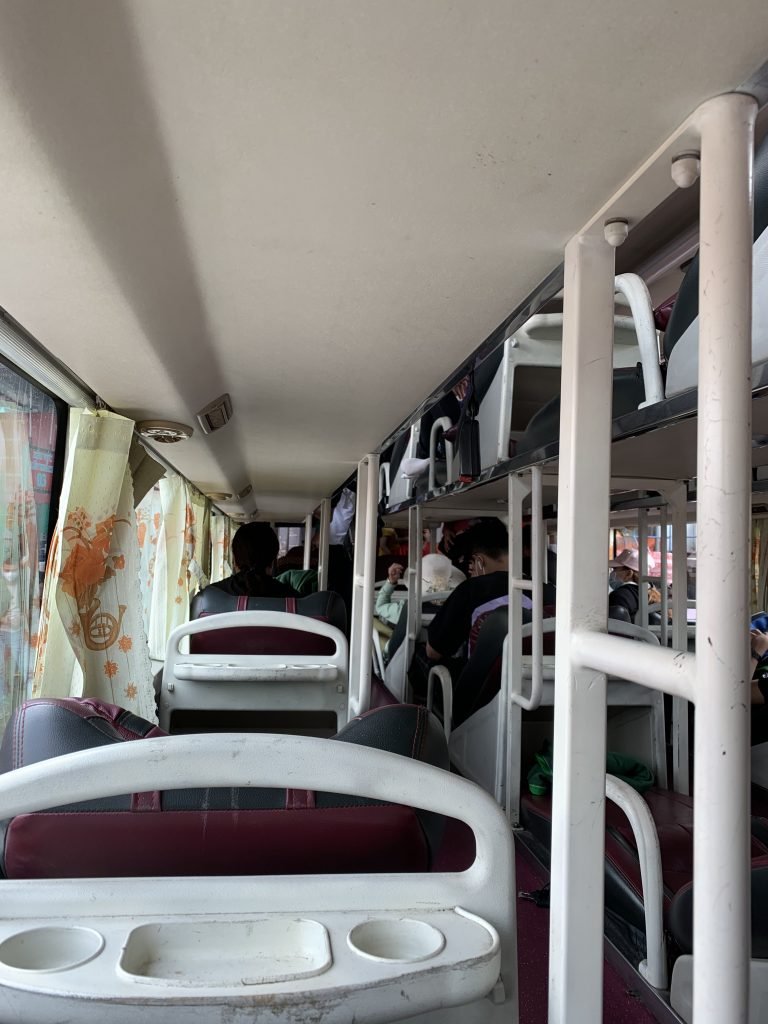
Insider Tips
- You will likely bump into a lot of noodle stalls in Dong Thap. No matter it is Hu Tiu Sa Dec or Hu Tiu Nam Vang, you should try to order the dried version. Different from the traditional version, the noodle will be prepared separately from the broth, from which you will taste the blend of noodles and soy sauce much better.
- Apart from those aforementioned dishes in the posts, you should also try other common delicacies in Dong Thap, such as Nem Lai Vung (Lai Vung’s sour meatball, Ca Loc Nuong Trui (grilled snakehead fish, used with tamarind fish sauce), Lau Ca Linh Bong Dien Dien (oops, we may help with translation here?)
We hope that you already had some good ideas to explore Dong Thap on your own terms. Let’s know about your journey and plan by leaving comments below.
Originally posted 2020-08-06 15:34:58.

